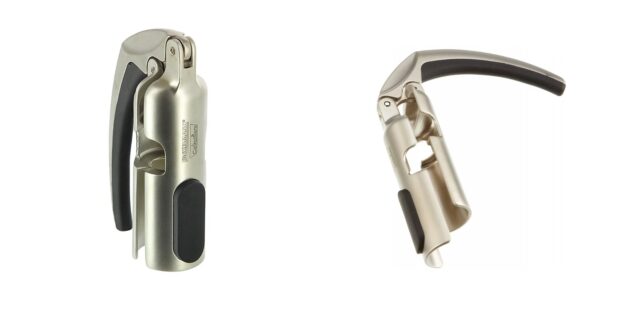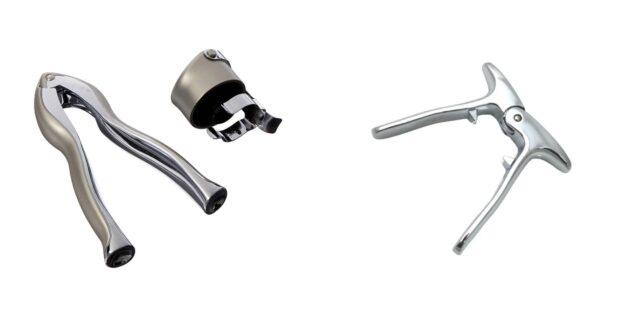1. Cool the wine: prosecco, cava and other light sparkling wines to 7-8 °C, and aged to 10-11 °C. To do this, put the bottle in the refrigerator for 4-6 hours. The low temperature will reveal the taste of the drink and will not allow the cork to fly out of the bottle abruptly.
2. If you expect to open the champagne carefully, and not shoot the cork into the ceiling, it is better not to shake it.
3. Wrap the bottle with a cloth towel or a napkin so that the wet container does not slip out of your hands. Cover the neck itself with a towel: this way the cork will end up in a cloth pocket as soon as it comes out, and will not fly away in an unknown direction.
4. Remove the foil from the neck.
5. Position the bottle at an angle of 30-45 degrees so that the bottom rests against a hard surface, your stomach, hip or the inside of your palm.
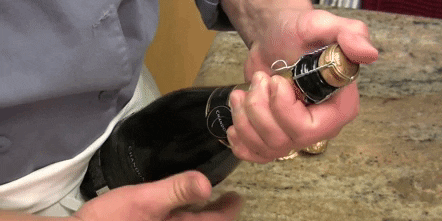
6. Remove the musical bridle from the wire. Hold the plug with your thumb so that it does not open prematurely. The musical can not be completely removed, but only weakened.
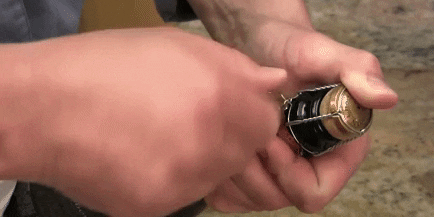
7. Turn the bottle smoothly (not the cork!), gradually pulling out the cork.
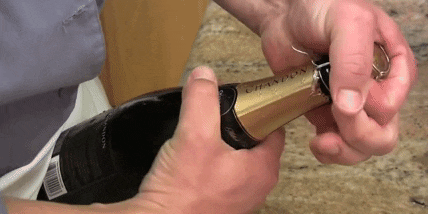
8. As soon as you feel that the pressure inside the bottle begins to push out the cork, pry it with your thumb and gently pull it out.
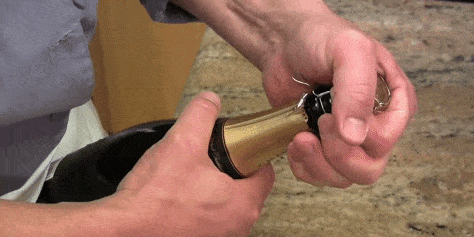
9. If you find a particularly stubborn bottle, you can try holding its neck under hot water for 2-3 minutes. This will help move the carbon dioxide inside the vessel to the plug and push it out.
This method is suitable if the wooden stopper is broken. If it is intact, you need to cut off its upper part at the level of the neck. The corkscrew is screwed into the remains of the cork and removed in the same way as from an ordinary wine bottle. At the same time, the champagne wrapped in a towel must be held firmly in your hand so that it does not slip out.
But it is better to turn to this option only as a last resort. The cork is under pressure, so it will fly out with the corkscrew if you do not hold it. Which means you may get hurt.
With a broken plastic stopper, such a trick will not work. It will have to be dug out and taken out piece by piece.
This method is called "sabrage". It is quite dangerous and designed for professionals who want to surprise the public. One of the disadvantages is that the cork flies out abruptly and can injure someone. And the drink itself is likely to spill. But fragments can be avoided if you hit the right point: the pressure inside the bottle will help to form an even chip.
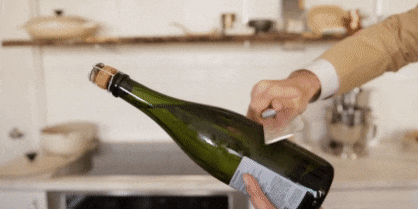
Progress has reached the point where it has saved us from having to open champagne with hard manual labor. There are many models of corkscrews designed specifically for champagne, and here are just a few of them. They will allow you to open the bottle with one easy movement and catch the cork themselves.
Such a device will help to easily pull out the plug. Put the holder on it and, holding the cork, slowly turn the bottle until it opens.
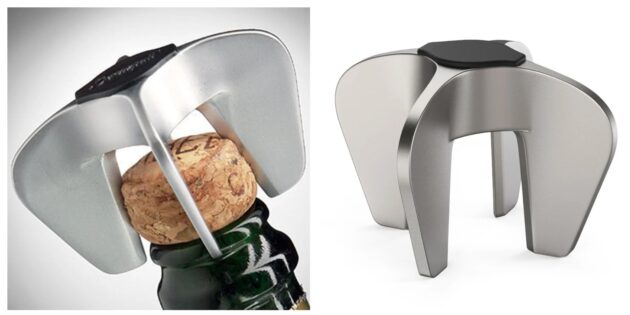
To open the bottle with this corkscrew, you just need to pull up the handle.
